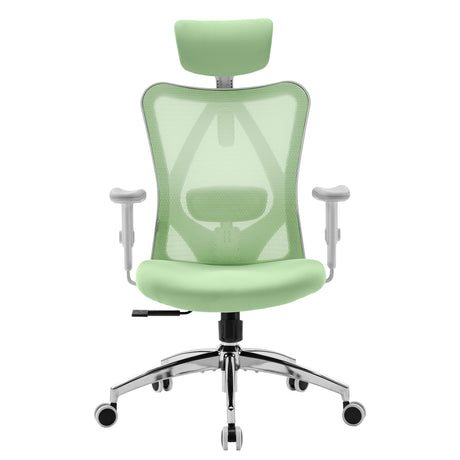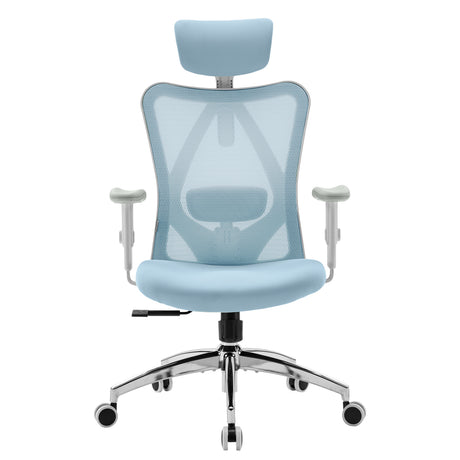Attention-Deficit/Hyperactivity Disorder (ADHD) is one of the most widely discussed neurodevelopmental conditions today, yet it remains deeply misunderstood. While many people have heard of challenges like distractibility, impulsivity, or hyperactivity, fewer are aware of an important framework called the 30% Rule, a concept often referenced by leading ADHD researcher Dr. Russell Barkley. The rule offers a practical and clinically grounded way to understand the differences between chronological age and functional age in individuals with ADHD.
In this long-form, expert-level guide, we will explore what the 30% Rule is, why it matters, what the science says, how it affects daily life, and how families, employers, clinicians, and individuals with ADHD can use it to build more realistic expectations and better support structures.
This article avoids keyword stuffing, follows search-optimized best practices, and reads in a naturally human way—making it useful both for readers and for search engines assessing content quality.
1. Introduction
ADHD is far more than a simple “attention problem.” Modern research shows it is primarily a disorder of executive function—the brain’s self-management system. These skills include planning, inhibition, organization, emotional regulation, task initiation, and long-term goal maintenance.
One of the most useful tools for understanding the real-world impact of ADHD is the 30% Rule, a practical and research-backed guideline that helps explain why individuals with ADHD may struggle with responsibilities, routines, or self-regulation that seem developmentally appropriate for their age.
Parents often describe their frustration:
- “My 12-year-old acts like they’re 8 when it comes to chores.”
- “My teenager is smart, but they can’t organize homework to save their life.”
- “My adult partner is creative and brilliant, but time management is a disaster.”
These observations aren’t about immaturity or laziness—they align closely with what decades of empirical evidence demonstrates.
The 30% Rule provides a framework to interpret these differences without judgment, blame, or confusion.
2. What Is the 30% Rule in ADHD?
The 30% Rule in ADHD states that:
Individuals with ADHD function approximately 30% behind their chronological age in key executive function skills.
This means that a person’s biological age may be very different from their functional age when it comes to self-management abilities.
Examples:
- A 10-year-old may operate like a 7-year-old in emotional regulation or follow-through.
- A 16-year-old may function like an 11–12-year-old when it comes to independence, planning, and motivation.
- A 30-year-old adult may manage time and responsibilities similarly to someone in their early 20s.
The rule does not mean that people with ADHD are less intelligent or incapable. Intelligence is typically unaffected. Instead, the rule addresses how the ADHD brain organizes effort, attention, memory, emotions, and time.
This discrepancy can create misunderstandings if not acknowledged.
3. Where the 30% Rule Comes From
The 30% Rule is based on the work of Dr. Russell Barkley, a clinical psychologist and one of the leading experts on ADHD. Through decades of research, he found consistent delays in the development and functioning of executive skills, typically ranging from 25% to 40%, with 30% serving as a widely accepted average.
These findings come from:
- long-term clinical studies
- neuropsychological testing
- behavioral analyses in educational and family settings
- longitudinal research following individuals across decades
By synthesizing these data points, Barkley developed the 30% Rule to provide a simple and actionable way to understand the functional delays associated with ADHD.
It is not a clinical diagnosis on its own but a guideline to help contextualize symptoms and behaviors.
4. The Executive Function Gap Explained
Executive functions are often described as the brain’s CEO, responsible for managing long-range goals, short-term demands, emotional responses, and impulse control.
When someone with ADHD experiences a 30% delay in these systems, the gap becomes clear:
Executive Functions Commonly Affected
- Working memory
- Inhibitory control
- Task initiation
- Planning and prioritization
- Time perception and time management
- Emotional regulation
- Self-monitoring
- Goal-directed persistence
This delay means the person may be fully capable intellectually but struggle to use their abilities consistently.
Classic examples include:
- Forgetting assignments despite understanding the material
- Losing track of time despite knowing the schedule
- Feeling intense emotions over small frustrations
- Struggling to start tasks even when motivated
- Impulsively reacting before thinking
The gap between knowledge and performance is one of the hallmarks of ADHD.
5. How the 30% Rule Manifests in Children
For children with ADHD, the 30% Rule becomes most evident in the areas of behavioral regulation, emotional control, and responsibility.
Examples of Functional Delays in Children
- Impulse control: acting before thinking
- Frustration tolerance: meltdowns or emotional outbursts
- Working memory: forgetting multi-step instructions
- Task completion: difficulty finishing chores or homework
- Organization: messy rooms or misplaced items
A 9-year-old may understand what is expected but not have the internal tools to consistently meet those expectations.
Parents often observe:
- inconsistent performance
- misunderstanding of routines
- struggle with independence
- resistance to transitions or changes
- difficulty with patience and waiting
When caregivers interpret these behaviors as “defiance,” tension rises. When they interpret them through the lens of the 30% Rule, expectations become more realistic and strategies become more effective.
6. How It Affects Teenagers
Adolescence is one of the most challenging periods for individuals with ADHD because expectations for independence escalate rapidly while executive function skills may still lag by several years.
Typical Challenges in Teens with ADHD
- managing deadlines
- planning long-term projects
- handling complex schedules
- resisting social pressure
- navigating emotional volatility
- preparing for college or work
- maintaining routines without supervision
For example, a 16-year-old functioning like an 11-year-old in planning may struggle with:
- organizing homework
- meeting curfews
- keeping track of school materials
- driving safely (risk-taking is higher)
- managing social conflicts
This gap can create conflicts at home and school, especially when adults assume teens “should know better.”
Recognizing the developmental lag helps shift the focus from blame to support.
7. The Rule and Adults with ADHD
ADHD does not disappear in adulthood. Many adults learn to mask or compensate for symptoms, but the 30% Rule still applies.
In adults, the 30% gap may appear as:
- chronic lateness
- difficulties with budgeting and finances
- procrastination on important tasks
- inconsistent work performance
- disorganization at home
- emotional impulsivity
- difficulty maintaining long-term goals
A 35-year-old adult with ADHD may function like a 25-year-old in executive areas such as:
- planning
- emotional self regulation
- motivation
- self-discipline
- follow-through
This often leads to:
- career instability
- relationship misunderstandings
- burnout
- shame or guilt
- underperformance despite high potential
Adults with ADHD frequently say, “I know what I need to do, I just can’t do it consistently.”
This is not a character flaw—it's the core of executive dysfunction.
8. Why the 30% Rule Is Not an Insult—It’s a Diagnostic Insight
Some people misinterpret the 30% Rule as a value judgment, but it is purely a functional description with clinical relevance.
The rule does not imply:
- lower intelligence
- immaturity as a personality trait
- inability to learn or grow
- fixed limitations
The rule does imply:
- the brain’s self-management system develops differently
- expectations need to be adjusted
- support strategies must be modified
- emotional and behavioral patterns have a neurological basis
The 30% Rule can be empowering because it replaces blame and shame with understanding.
9. The 30% Rule vs. Typical ADHD Stereotypes
Common stereotypes oversimplify ADHD as:
- poor attention
- “bad behavior”
- hyperactivity
The 30% Rule reframes the condition in a more accurate and compassionate way. It shows ADHD is fundamentally a delay in the brain systems governing:
- inhibition
- planning
- emotional stability
- goal management
- organization
This shifts the focus from character judgments (“lazy,” “careless,” “unmotivated”) to a clinical understanding of executive dysfunction.
10. How Clinicians Use the 30% Rule
Clinicians do not diagnose ADHD using the 30% Rule, but they use it as a conceptual tool to:
- set developmentally appropriate expectations
- guide behavioral interventions
- support parents and teachers
- frame treatment plans
- explain symptom patterns
- help individuals interpret their own behaviors
It is especially useful in psychoeducation because it translates complex neuroscience into a practical, relatable guideline.
11. Implications for Parenting
Parents often feel frustrated or confused when their child with ADHD behaves differently from peers. The 30% Rule provides clarity.
Practical Parenting Implications
- Expect less independence than chronological age suggests.
- Provide more structure and routine.
- Use visual aids and step-by-step instructions.
- Offer consistent monitoring and reinforcement.
- Implement shorter timeframes for goals.
- Avoid assuming “they should know better.”
This approach reduces power struggles and increases success for both the child and the parent.
12. Implications in School Settings
Educators benefit enormously from understanding the 30% Rule.
In classrooms, the rule explains:
- why some students fall behind despite high intelligence
- why they forget materials or deadlines
- why emotional reactions may seem disproportionate
- why self-control fluctuates
Teachers can adapt by:
- breaking tasks into smaller parts
- allowing movement or sensory breaks
- providing structured routines
- using checklists
- giving advance notice of transitions
- adjusting expectations based on functional age
These accommodations are not “special treatment”—they equalize access to learning.
13. Workplace Implications for Adults
In professional environments, the rule helps explain why adults with ADHD may excel in creative or high-energy roles but struggle with routine tasks.
Implications for employers and employees
- time-blindness affects project timelines
- emotional impulsivity affects feedback processing
- working memory challenges affect multitasking
- inconsistent focus impacts productivity
- organization difficulties create bottlenecks
Providing accommodations or flexible structures can result in dramatic performance improvements.
14. Executive Function Skills Affected by the 30% Rule
Below is a closer look at the core skills impacted:
1. Working Memory
Holding and using information mentally (e.g., remembering instructions).
2. Inhibition
Stopping impulsive actions or emotional reactions.
3. Cognitive Flexibility
Shifting attention or adapting plans.
4. Planning and Prioritization
Knowing what to do, when to do it, and in what order.
5. Emotional Regulation
Managing intensity of emotions.
6. Time Perception
Accurately estimating or tracking time.
7. Motivation and Task Initiation
Starting tasks without external prompting.
These skills form the foundation of independent functioning, and their delay explains many daily challenges.
15. Realistic Examples of the Rule in Daily Life
Example 1: Homework
A 12-year-old may genuinely forget to pack homework, despite reminders.
Example 2: Chores
A 14-year-old may need supervision completing multi-step tasks.
Example 3: Driving
A 17-year-old may require stricter boundaries due to impulsivity.
Example 4: Work Performance
A 28-year-old may excel at creative tasks but struggle with email management or deadlines.
Example 5: Relationships
Emotional dysregulation may lead to intense reactions to minor conflicts.
Understanding the functional gap makes these patterns less mysterious and easier to support.
16. Strengths That Often Coexist with the 30% Gap
ADHD is not solely defined by challenges. Many individuals exhibit exceptional strengths, including:
- creativity
- hyperfocus on areas of interest
- rapid problem-solving
- spontaneity and adaptability
- strong intuition
- high energy
- innovative thinking
The 30% Rule highlights challenges, but it does not diminish the unique and valuable traits that often accompany ADHD.
17. Misconceptions and Limitations of the Rule
Misconceptions
- It does not define intelligence.
- It does not apply uniformly to every individual.
- It is not a diagnostic tool.
- It is not meant to infantilize people.
Limitations
- The 30% figure is an approximation.
- Executive function skills can vary significantly across contexts.
- Some individuals develop compensatory mechanisms earlier.
Still, the rule remains one of the most helpful frameworks for understanding ADHD realistically.
18. Strategies to Bridge the Executive Function Gap
1. Externalize Everything
- calendars
- planners
- to-do lists
- visual schedules
- alerts and reminders
ADHD brains thrive when structure is visible.
2. Break Work into Smaller Steps
Shorter tasks reduce overwhelm and increase follow-through.
3. Use Environmental Modifications
- quiet workspace
- reduction of distractions
- object placement that supports habits
4. Provide Immediate Feedback
Immediate reinforcement strengthens neural pathways.
5. Build Routines and Habits
Consistency helps compensate for working memory limitations.
6. Practice Emotional Regulation Techniques
- mindfulness
- breathing exercises
- cognitive reframing
7. Seek Professional Support
- behavioral therapy
- occupational therapy
- ADHD coaching
- medication when appropriate
These strategies help compensate for the developmental lag.
19. Treatment Approaches and How They Help
Treatment does not “fix” ADHD but strengthens executive functions.
Medication
Stimulant and non-stimulant medications can significantly improve:
- attention
- impulse control
- working memory
- motivation
- emotional stability
Therapy
Behavioral and cognitive therapies reinforce practical skills and coping strategies.
Skills Coaching
Coaches provide real-world strategies for organization, scheduling, and accountability.
Lifestyle Adjustments
- regular exercise
- adequate sleep
- structured routines
- proper nutrition
Treatment reduces the executive function disparity and supports long-term success.
20. Should the 30% Rule Change Expectations?
Yes—but in a balanced, thoughtful way.
Adjust expectations by:
- recognizing the functional age gap
- providing support that matches the individual’s executive abilities
- avoiding punitive approaches
- building systems to help the ADHD brain thrive
Do not adjust expectations by:
- assuming incompetence
- lowering long-term goals
- eliminating challenges entirely
Support should empower, not limit.
21. Conclusion
The 30% Rule in ADHD is one of the most effective ways to understand the everyday realities of executive dysfunction. By recognizing that individuals with ADHD may operate several years behind their chronological age in self-management skills, we create a more compassionate and accurate framework for interpreting behaviors.
This rule does not diminish inte lligence, capability, or potential. Instead, it contextualizes why certain tasks are harder and why support structures must be adjusted—not because individuals with ADHD can’t succeed, but because they succeed best when their needs are understood.
Whether you are a parent, educator, employer, clinician, or someone with ADHD, the 30% Rule provides clarity, structure, and direction. It helps turn confusion into understanding and frustration into practical strategy.
When used thoughtfully, it is one of the most powerful tools for improving quality of life and supporting long-term growth in individuals with ADHD.



































